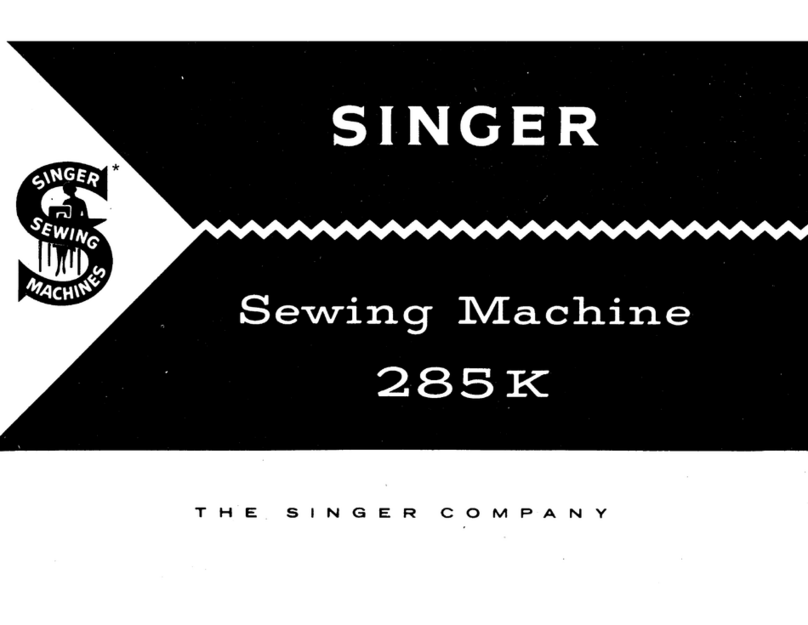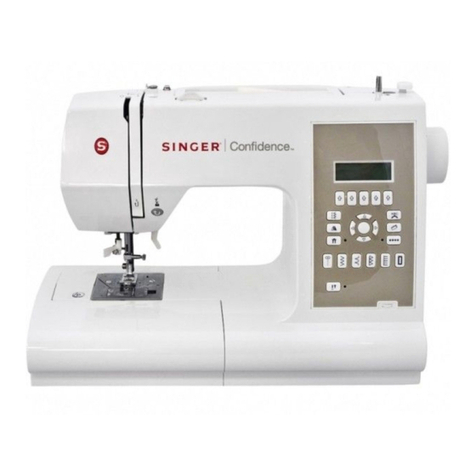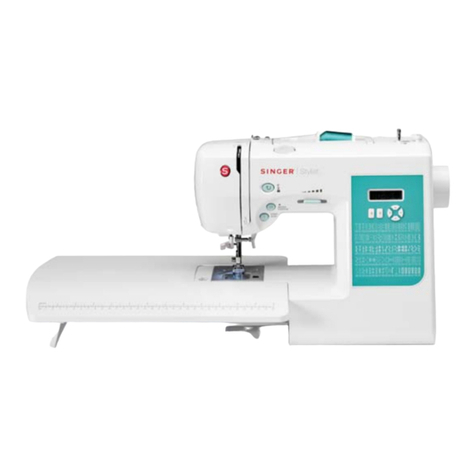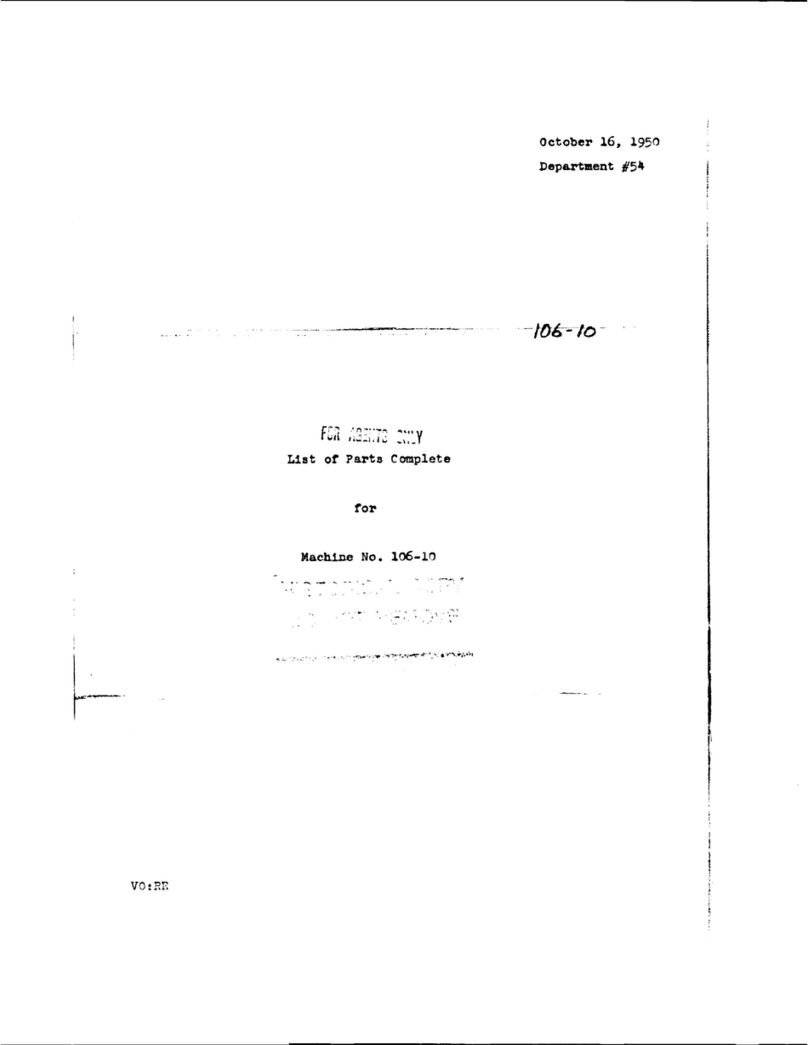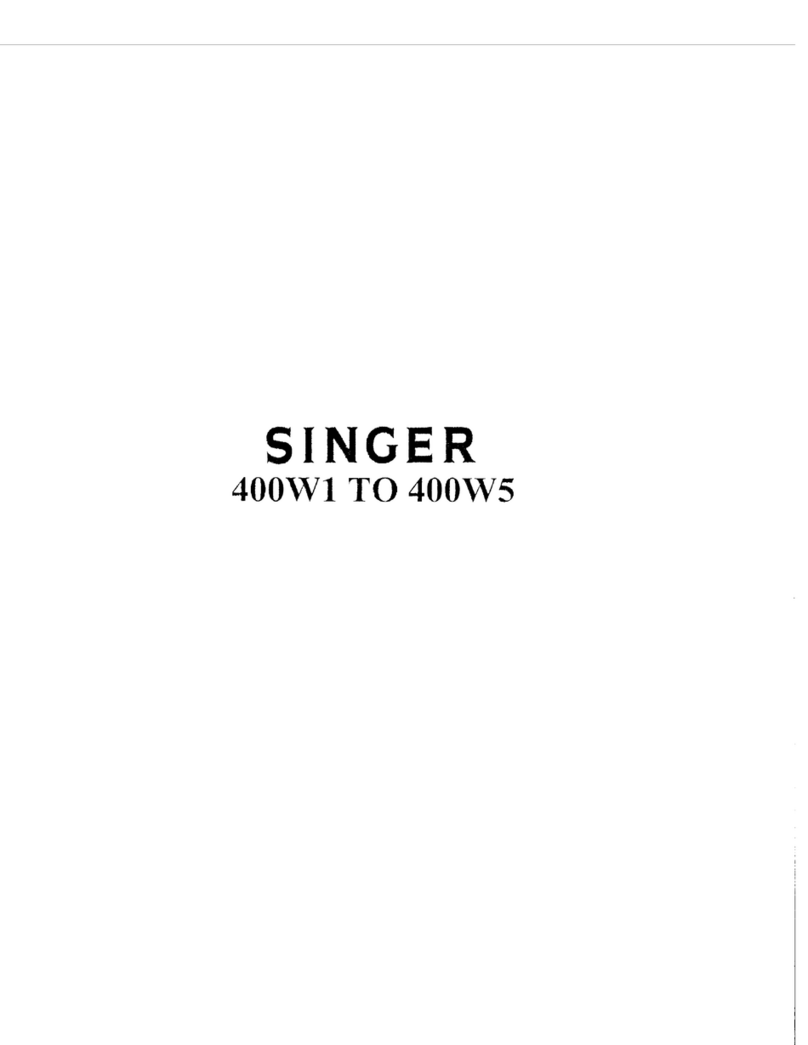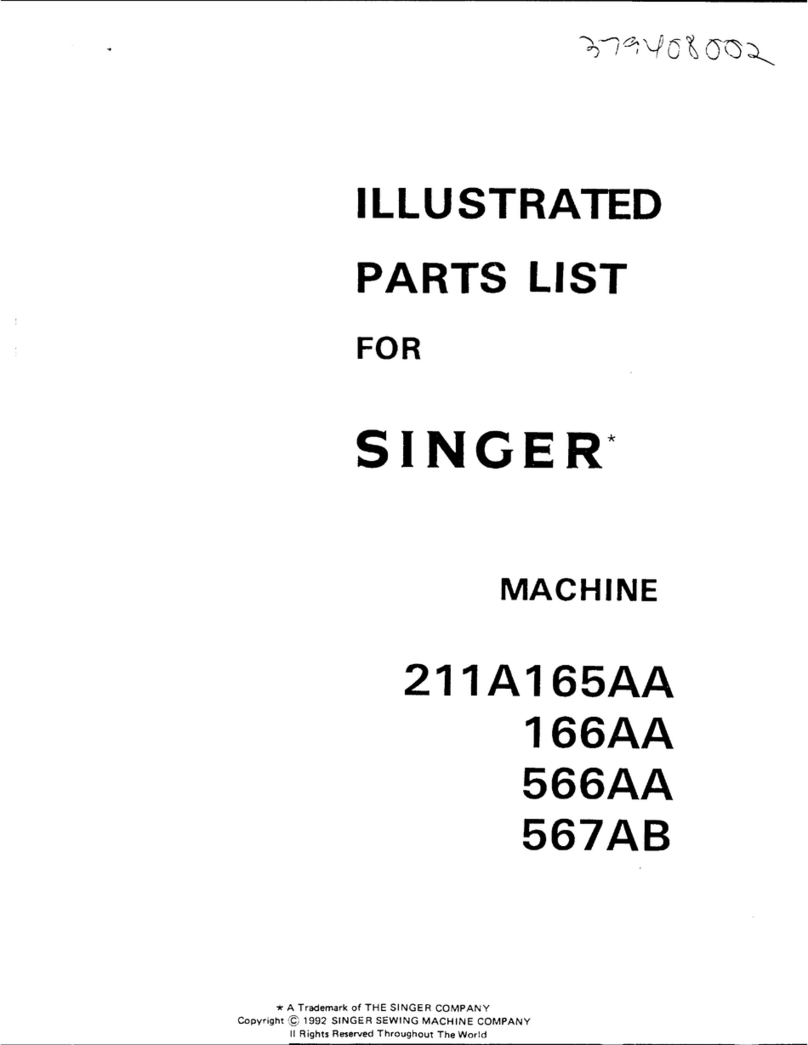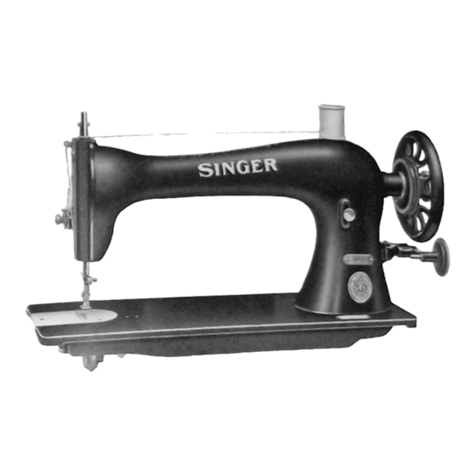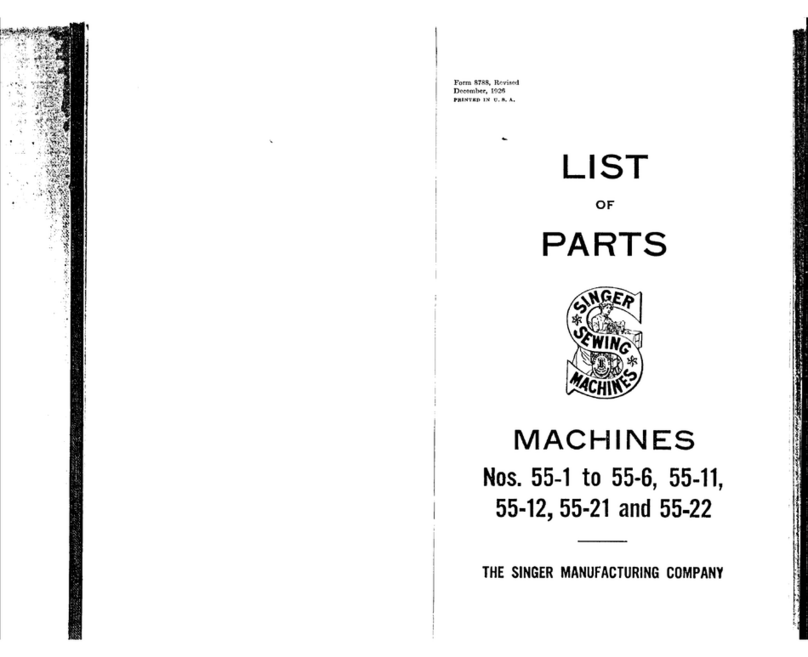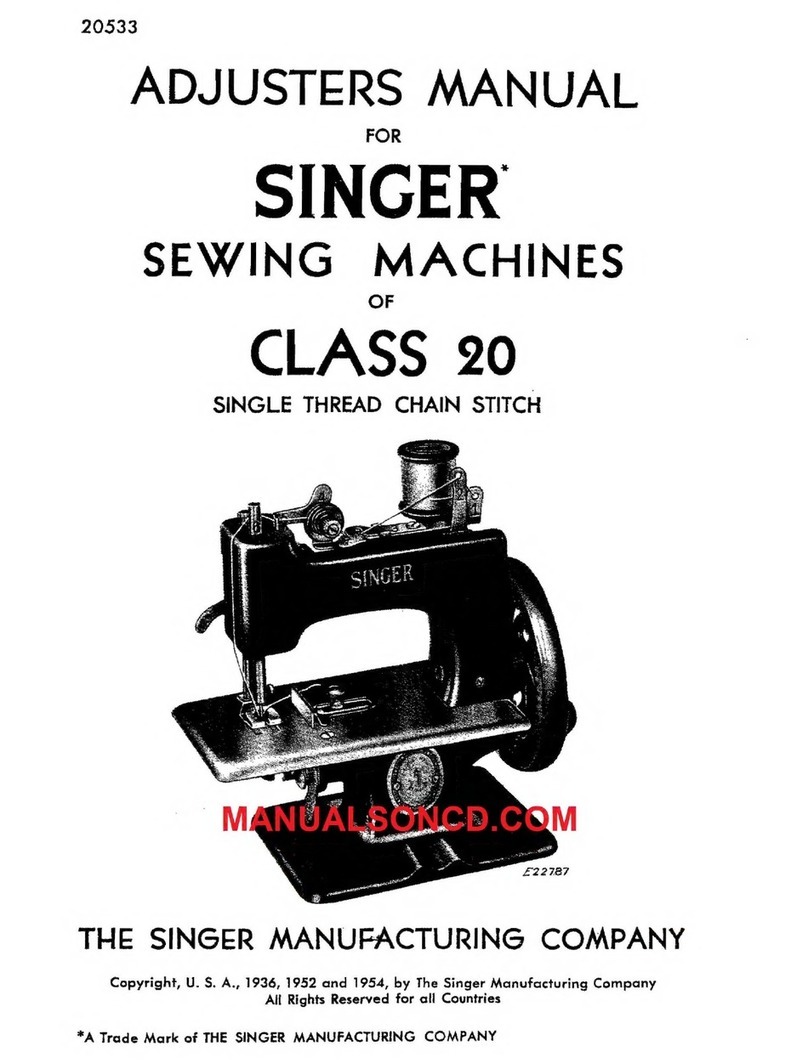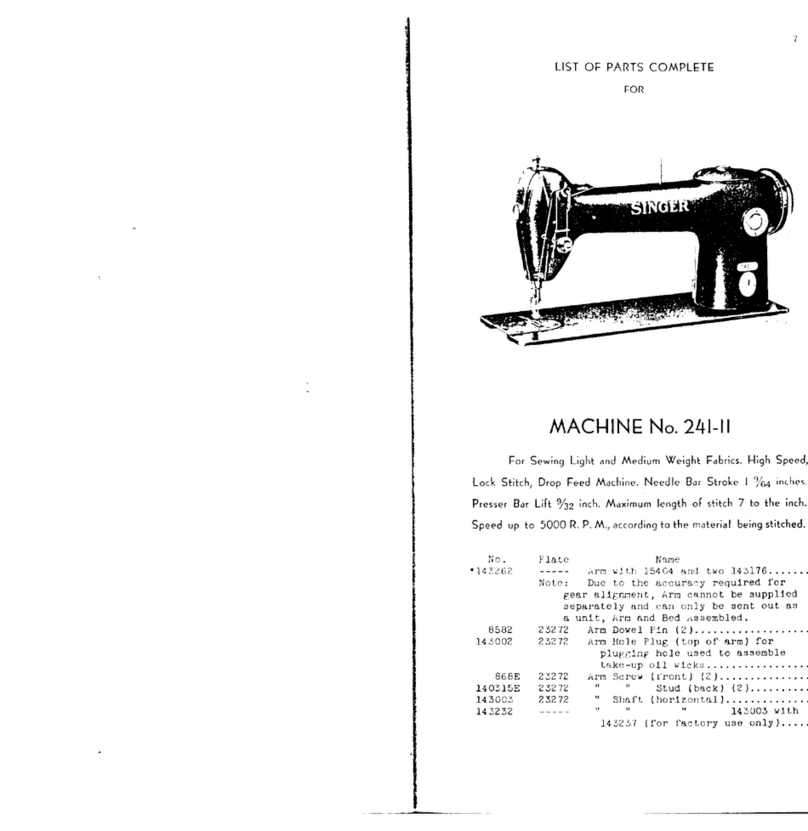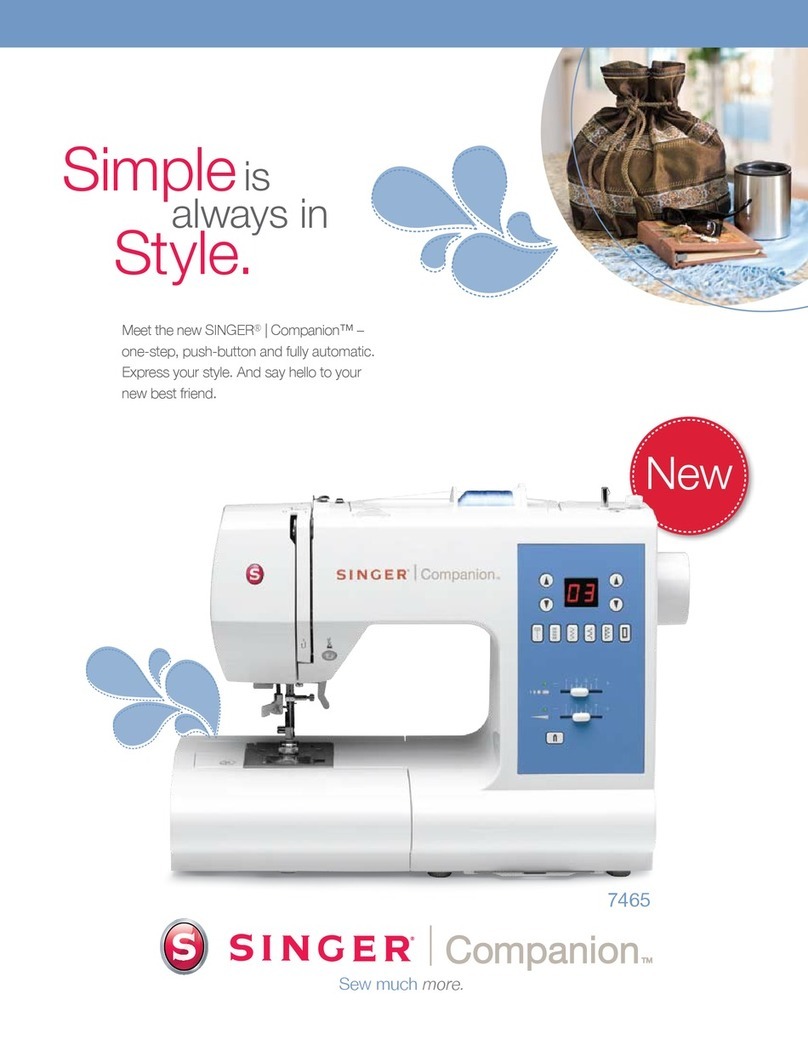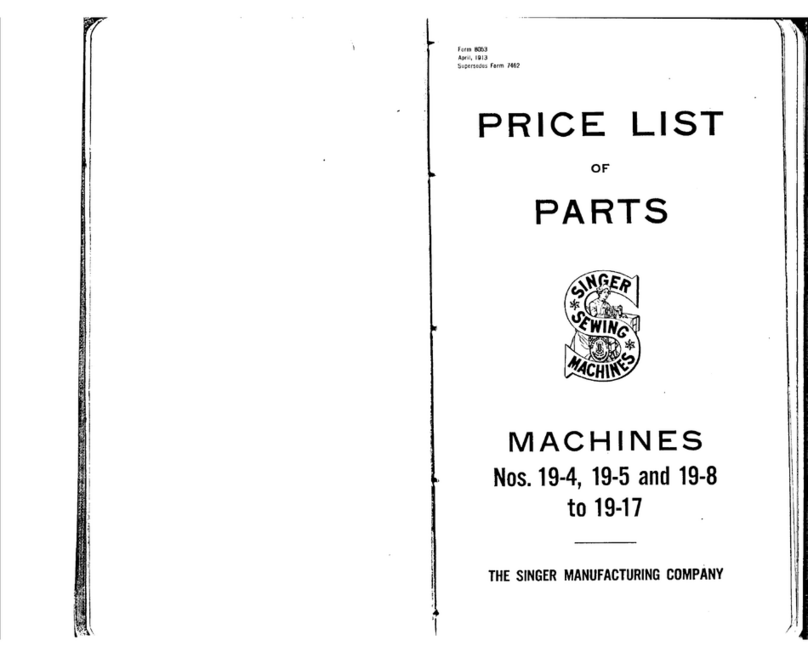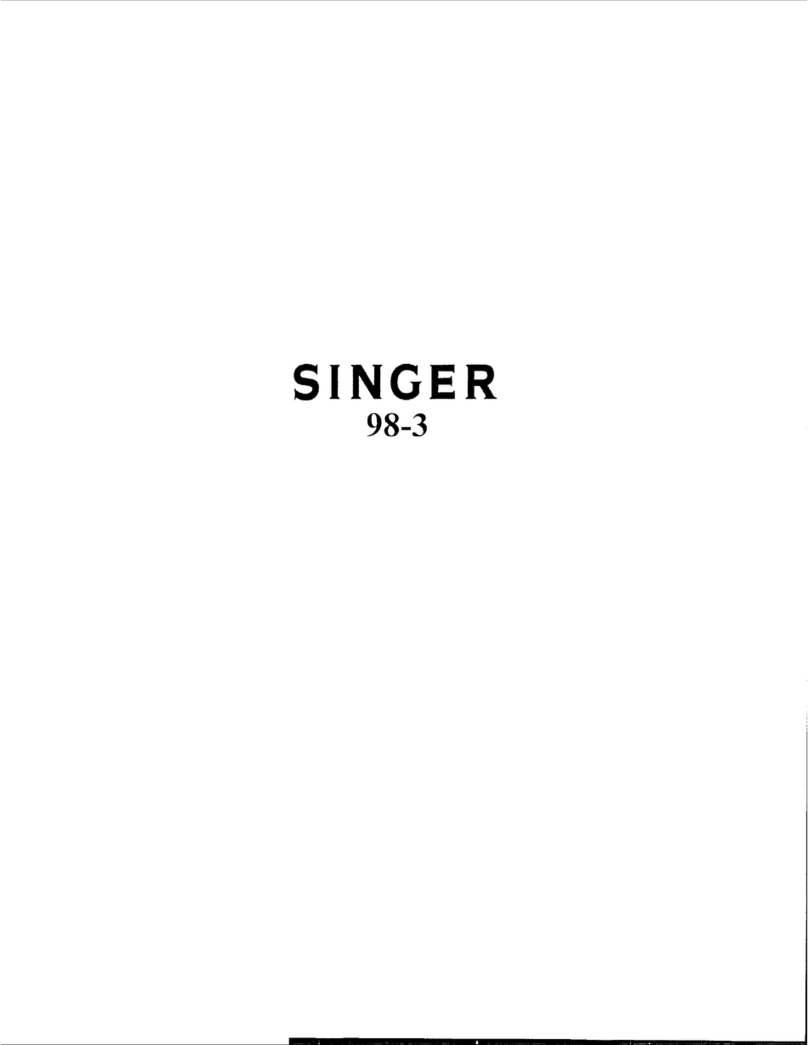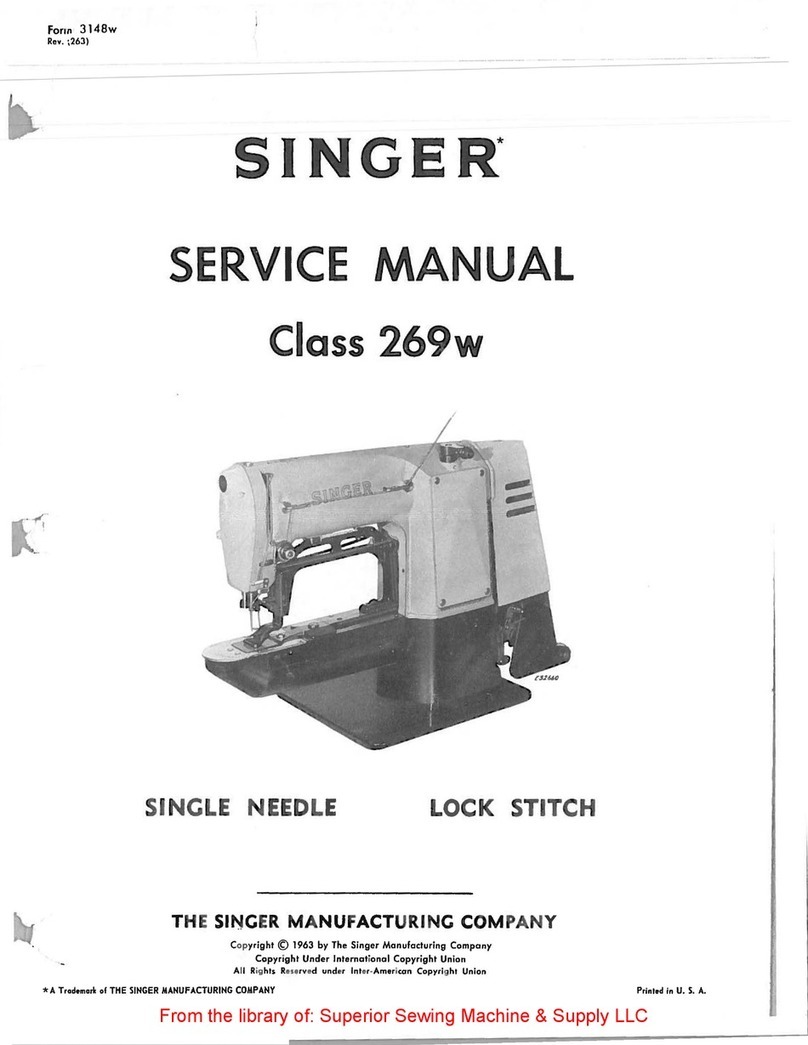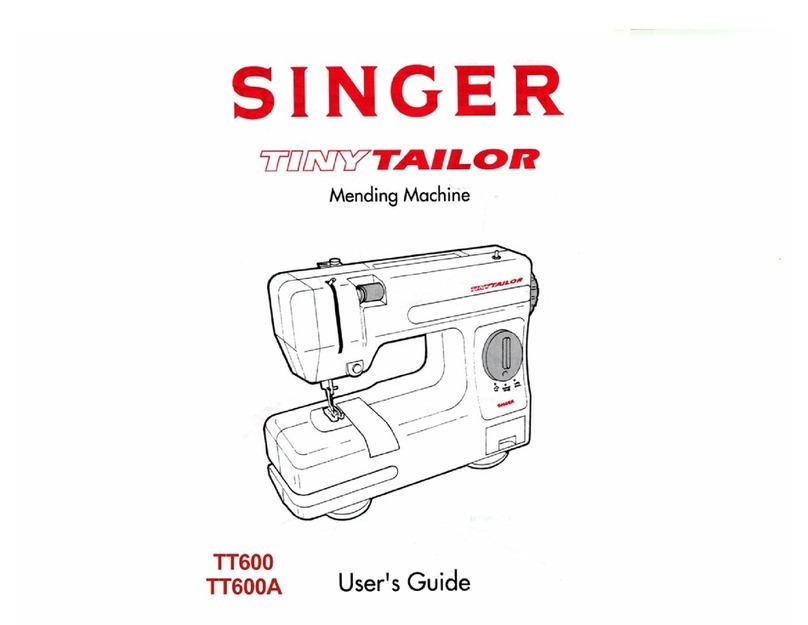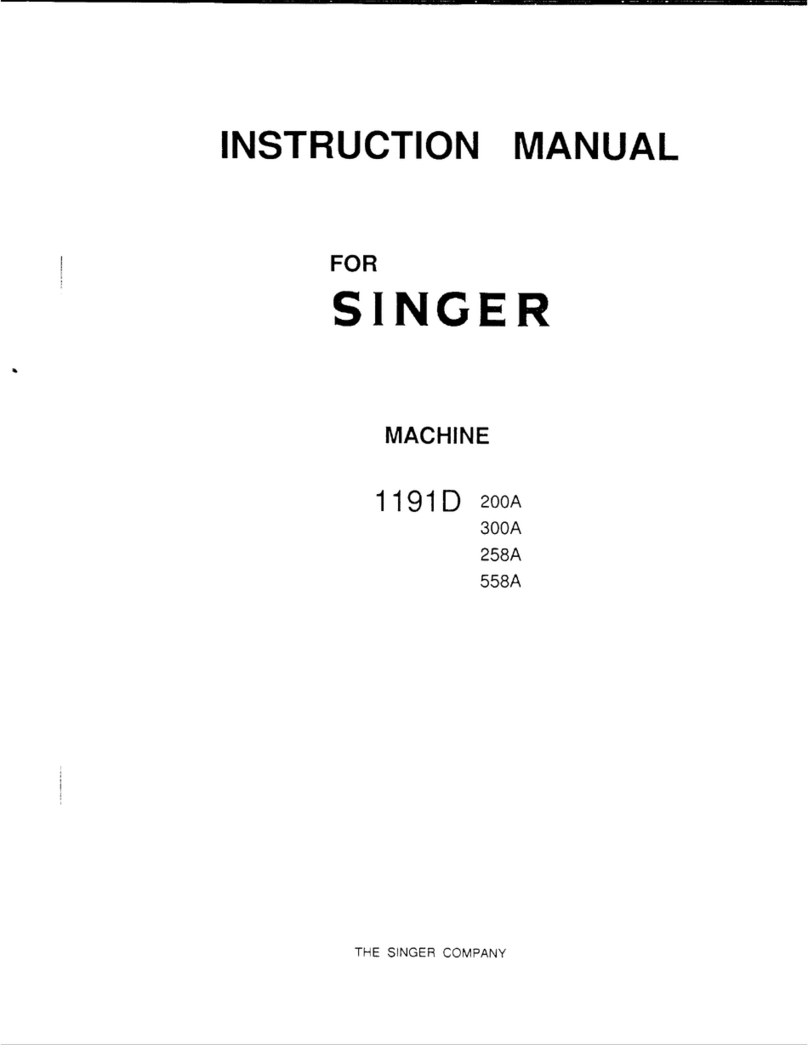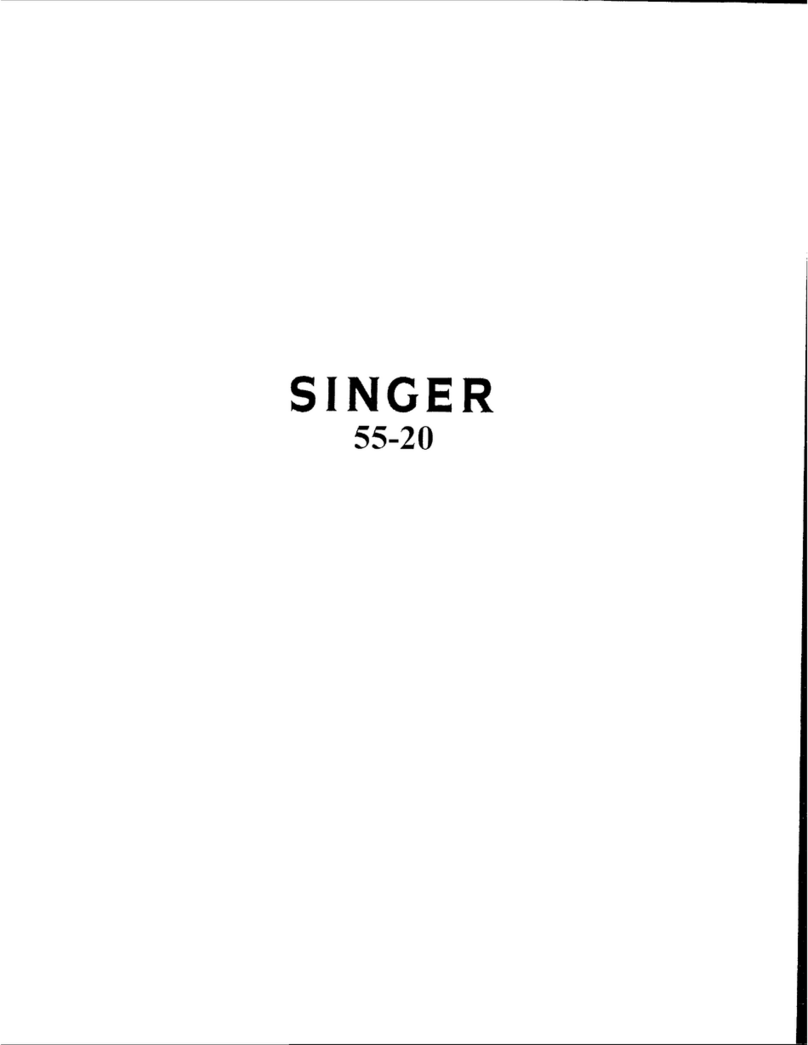
From the library of Superior Sewing Machine & Supply LLC - www.supsew.com
16
TO
ADJUST
THE
AUXILIARY
THREAD
TAKE-UP
(See
Fig.
16)
The auxiliary thread toke-up G should
be set
to
toke up the slack
of
the needle
thread
after
the
looper
hos
shed the needle H -""'="'"•
loop
and
as
the needle
bar
finishes its G
downward
stroke and the stitch
is
set.
To
change the position
of
the auxiliary
thread take-up, loosen the screw H and
raise
or
lower
the
auxiliary
thread toke-up
as
required, then tighten screw
H.
Cl~
Fig.
16.
AuJ<iliary
Thread Take-up
TO
ADJUST
THREAD
TENSION
RELEASER
(See
Fig.
17)
The tension releaser
must
release
the tension on the needle thread
when the presser
foot
is
raised.
In
case the tension releaser does
not
properly
release the thread,
loosen set screw V and turn shaft W
over
to
the
left
until
correct
adjust- W
ment
is
· obtained, then securely
tighten the set screw
V.
( Fig. 17. Adjusting
l Thread
Tension
RelealM
l
'
"'
17
TO
SET
THE
NEEDLE
GUARD
(Se-,
Figs.
I8
and
I 9)
The function
of
the needle guard
R,
Fig. 18,
is
lo
prevent
the needle from
being sprung
into
the path
of
the
looper
when the
looper
is
on its
forward
stroke. The
needle
guard should be set
as
close
as
possible
to
the
needle
without
actually touching it.
Fig.
18. Setting N-,edle
Guard
To
set the needle guard in
correct
position,
loosen
the screw
S,
Fig.
18, and move the guard
to
or
from the
needle
as
may be required, then
securely lighten the screw
S.
The needle guard can also
be
adjusted
lo
right
or
left
lo
clear
the feed
dog,
alter
loosening the screw
T,
Fig.
18.
Needle
guard
is
at
the
correct
height when the
loop
formed
by the thread
in the needle comes
freely
out
of
the needle wiJhout touching the guard.
Fig. 19.
Needle
Guard Height Setting
To
adjust the height
of
the needle guard,
loosen
screw
D2,
Fig.
19, raise
or
lower
needle
guard
lo
the
correct
height, then securely tighten screw
D2.

